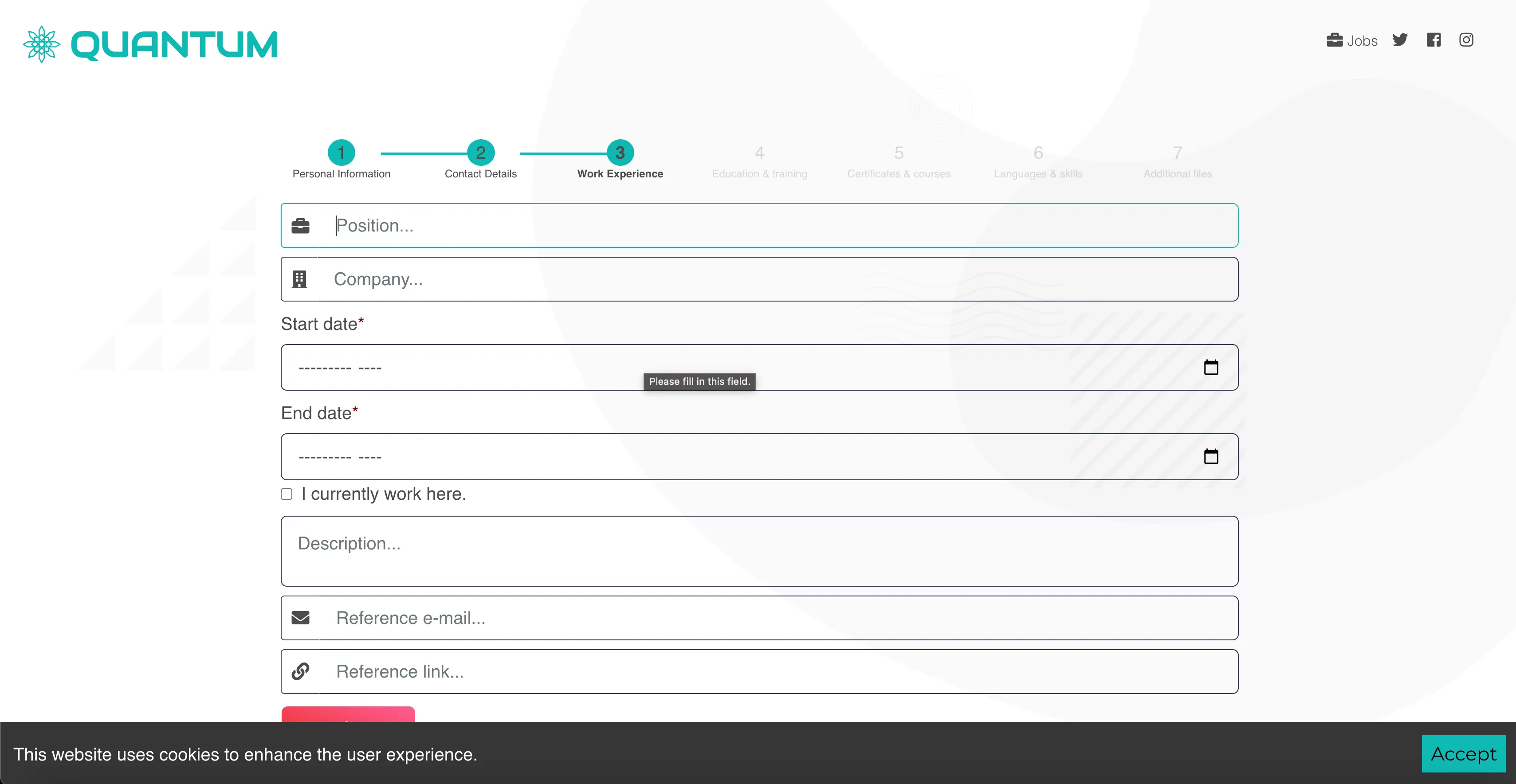April 2022 - April 2022
A web-based employment application platform featuring a user-friendly dashboard for clients to efficiently oversee and manage submitted job applications.

Project Goal
The client sought a website solution enabling job seekers to submit applications seamlessly, complemented by an integrated dashboard for streamlined application management.
The initial template selection from ThemeForest was deemed suitable, but adjustments were required to align with the company's branding palette.
Solution
React
React was employed for the frontend development due to its compatibility with the preexisting template, facilitating efficient color customization and the seamless creation of a versatile multi-step form.
Additionally, Clerk was integrated to enable social login functionality, enhancing user convenience by automatically populating certain user data.
NextJS
Next.js was employed for the development of the dashboard.
While the client's chosen template was originally built with React, I opted to utilize Next.js, harnessing its server-side rendering capabilities.
This choice facilitated efficient retrieval of job applications from the database and the implementation of secure authentication via NextAuth.js.
Bootstrap
Both templates were already utilizing Bootstrap, obviating the necessity for alterations in this regard.
The process of color customization proved straightforward, as it entailed the modification of variables within the SCSS files.
SCSS
While the templates possessed a pre-existing style foundation, certain adjustments were deemed imperative to enhance the overall user experience.
The incorporation of animations emerged as a particularly beneficial decision, imbuing the website with a contemporary and engaging ambiance.
NodeJS
To maintain consistency in the technology stack between the frontend and backend, I opted for Node.js for the backend development.
This choice facilitated the seamless creation of an API for tasks such as file uploads and database interaction, ensuring a harmonious and efficient system.
MongoDB
MongoDB was selected as the database solution, primarily due to the form's extensive use of dynamic fields and the client's requirement for the effortless addition of new fields.
Leveraging MongoDB enabled the consolidation of data within a single collection, alleviating concerns related to dynamic data length, such as previous work experience entries.